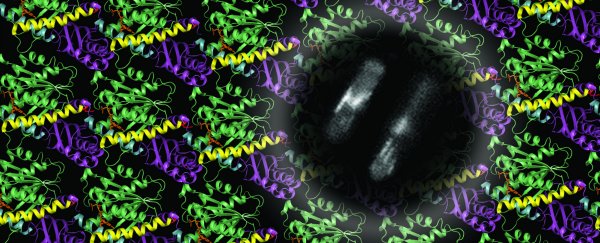A team of scientists led by the University of Technology Sydney (UTS) in Australia have gained world-first insight into archaea - the mysterious, ancient organisms that make up 20 percent of the biomass on Earth, but have gone relatively unexplored by science.
Their research, which has been published in Nature, shows that the organisms contain a surprisingly advanced protein that controls their shape and movement - and it's closely related to similar, medically important proteins in humans and bacteria.
Archaea have existed for around 2.5 billion years and are some of the oldest life forms on Earth. They make up the third major grouping of life on the planet, alongside eukaryotes (all plants and animals) and bacteria, and can exist in extreme conditions, including the human and animal guts. They also produce all biological methane on the planet.
Importantly, scientists believe that they could offer much-needed alternatives to antibiotics and could also greatly benefit chemical processing and industries - but very little is known about the organisms.
Now an international team, led by Iain Duggin, a research fellow at UTS Science's ithree institute, have found out some valuable information about the role of a vital protein in archaea that could allow scientists to better work with the organisms.
The protein is called CetZ, and the scientists discovered that it controls the shape and movement of archaeael cells - almost like a cytoskeleton - and allows them to move into a torpedo-like shape in order to swim faster.
This ability was thought to have evolved in complex organisms. But the study suggests it may have originated in archaea.
CetZ is part of a superfamily of proteins that is present in nearly all life - the equivalent in humans is called tubulin and in bacteria it's known as FtsZ. The discovery is important because tubulin is currently being investigated as a potential cancer drug target, and FtsZ is related to cell division and multiplication in bacteria.
"Our research helps understand the differences between the human (tubulin) and bacterial (FtsZ) proteins that are related to CetZ," said Duggin in a press release.
"Whilst tubulin is a key target in cancer drug development, we believe that FtsZ could be an important target for the development of new antibiotics, potentially enabling the design of anti-infective drugs that inhibit bacterial cell division and growth, with fewer side-effects."
The discovery could also allow scientists to take better advantage of archaea, according to the director of the ithree institute, Ian Charles.
"A new type of potentially useful antibiotic called Archaeocin has recently been described that is derived from the archaea," said Charles in the release. "Archaea provide an untapped source of novel compounds at a time when alternatives are urgently needed given the rapid rise of resistance to existing antibiotics."
While we're still only beginning to understand more about our most ancient relatives, it's an exiting first step towards the future.
Love science? Find out more about studying at UTS:Science.
